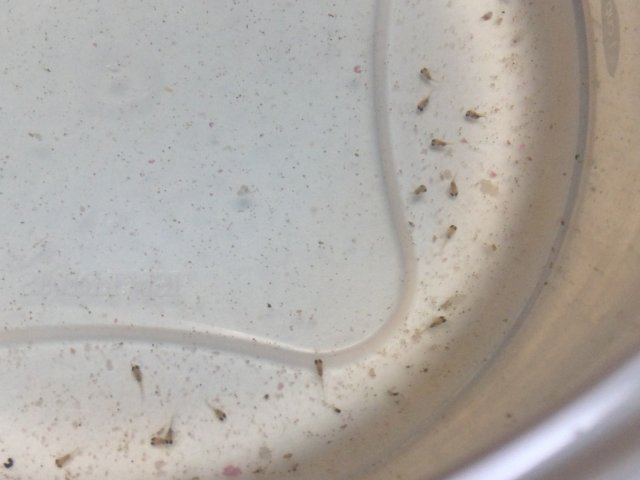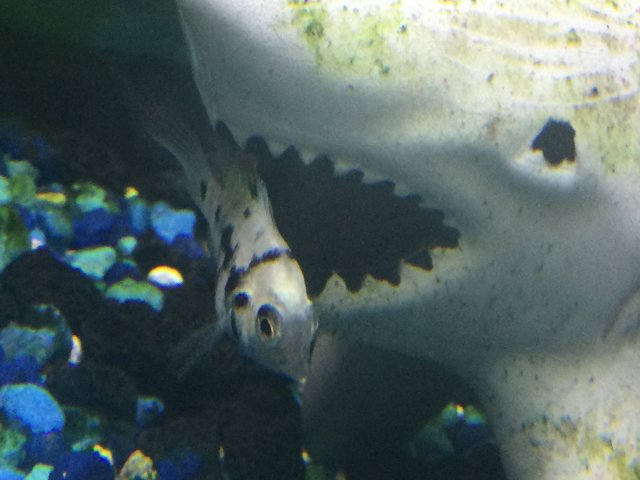Raising Polar Blue Parrot Cichlid Fry
- Thread starter JustTheFish
- Start date
You are using an out of date browser. It may not display this or other websites correctly.
You should upgrade or use an alternative browser.
You should upgrade or use an alternative browser.
You said polar blue but the fish is a marbled convict. The only reason I speak on this is because if you're trying to raise more marbled convicts... the marbled gene is recessive. Also my luck with the polar parrots wasn't very good... alot of the fry didn't make it. It's like their genetics were weak. They would live for about 2 weeks then start to die off daily. Not sure what your motive is for breeding them but good luck with your fish and project.
"Polar blue cichlids" are just short bodied convicts, they also come in marbled. But yes their genetics are a bit weaker than normal convicts. I notice fry die off at the two week mark for two main reasons, either the parents aren't experienced enough and one or both parents are eating them, or the tank isn't mature enough for fry to graze between feedings.You said polar blue but the fish is a marbled convict. The only reason I speak on this is because if you're trying to raise more marbled convicts... the marbled gene is recessive. Also my luck with the polar parrots wasn't very good... alot of the fry didn't make it. It's like their genetics were weak. They would live for about 2 weeks then start to die off daily. Not sure what your motive is for breeding them but good luck with your fish and project.
So let's talk(not argue) about this a little bit."Polar blue cichlids" are just short bodied convicts, they also come in marbled. But yes their genetics are a bit weaker than normal convicts. I notice fry die off at the two week mark for two main reasons, either the parents aren't experienced enough and one or both parents are eating them, or the tank isn't mature enough for fry to graze between feedings.
Yes, the short body gene is also recessive and usually pops up in the second or third generation of inbreedingHave you ever seen shortbody convicts from a batch of regular sized parents?
Right it is a mutation that all fish can have when inbred. But out of the short bodies you seen how many had the bp mouth? That's the point of this convo for me. The polar blues and the white "platinums" all have that mouth. I was on the same page as you until I see a tank full of short body convicts without that mouth. I had a pair of Texas cichlids that produced short bodies... some were 3/4 and others were shaped like bp but none had the bp mouth. I bred a Texas and a bp... the short bodies had the mouth of the bp but the genetic was present so that's different. Also I just gave a breeding pair of polar parrots away because of the fry dying off. They were great parents but their genes sucked. I had their parents(parents of pair givin to friend) which was a regular female and a platinum dad thinking that would strengthen the genetics and breeding back would give me platinums. The fry of course came out regular so I was able to keep about 6 of them alive and I had 2 pair up. The pair had a good 5 spawns before I let them go but they were 2 generations of inbreeding and I was able to keep about 5 alive from their very last spawn. There was a platinum parrot that I had to save from its regular bodied siblings. So somehow they started producing regular and sb. But I moved on and gave them to a buddy. In my experiences I've only seen that mouth when their is a bp with the genetics. I've bred bp so at the same time I'm aware and know that anything bred with a bp will have some faders and these don't so its just a lil weird to me.Yes, the short body gene is also recessive and usually pops up in the second or third generation of inbreeding
I'm not sure how the parrot mouth behaves, but when breeding synspilum to amphilophus, you get parrots in the first generation. Just a random mutation. They're definitely not bred to parrots to get the mouth, as they'd be a lot bigger and not as vibrant.Right it is a mutation that all fish can have when inbred. But out of the short bodies you seen how many had the bp mouth? That's the point of this convo for me. The polar blues and the white "platinums" all have that mouth. I was on the same page as you until I see a tank full of short body convicts without that mouth. I had a pair of Texas cichlids that produced short bodies... some were 3/4 and others were shaped like bp but none had the bp mouth. I bred a Texas and a bp... the short bodies had the mouth of the bp but the genetic was present so that's different. Also I just gave a breeding pair of polar parrots away because of the fry dying off. They were great parents but their genes sucked. I had their parents(parents of pair givin to friend) which was a regular female and a platinum dad thinking that would strengthen the genetics and breeding back would give me platinums. The fry of course came out regular so I was able to keep about 6 of them alive and I had 2 pair up. The pair had a good 5 spawns before I let them go but they were 2 generations of inbreeding and I was able to keep about 5 alive from their very last spawn. There was a platinum parrot that I had to save from its regular bodied siblings. So somehow they started producing regular and sb. But I moved on and gave them to a buddy. In my experiences I've only seen that mouth when their is a bp with the genetics. I've bred bp so at the same time I'm aware and know that anything bred with a bp will have some faders and these don't so its just a lil weird to me.
Yes I have seen a thread or 2 on syn/amph spawns and that mutation being common thing. Well I guess that wraps up our convo... they are just a short body mutation that was inbred repeatedly. And their genetics are alot weaker than regular convicts.I'm not sure how the parrot mouth behaves, but when breeding synspilum to amphilophus, you get parrots in the first generation. Just a random mutation. They're definitely not bred to parrots to get the mouth, as they'd be a lot bigger and not as vibrant.





